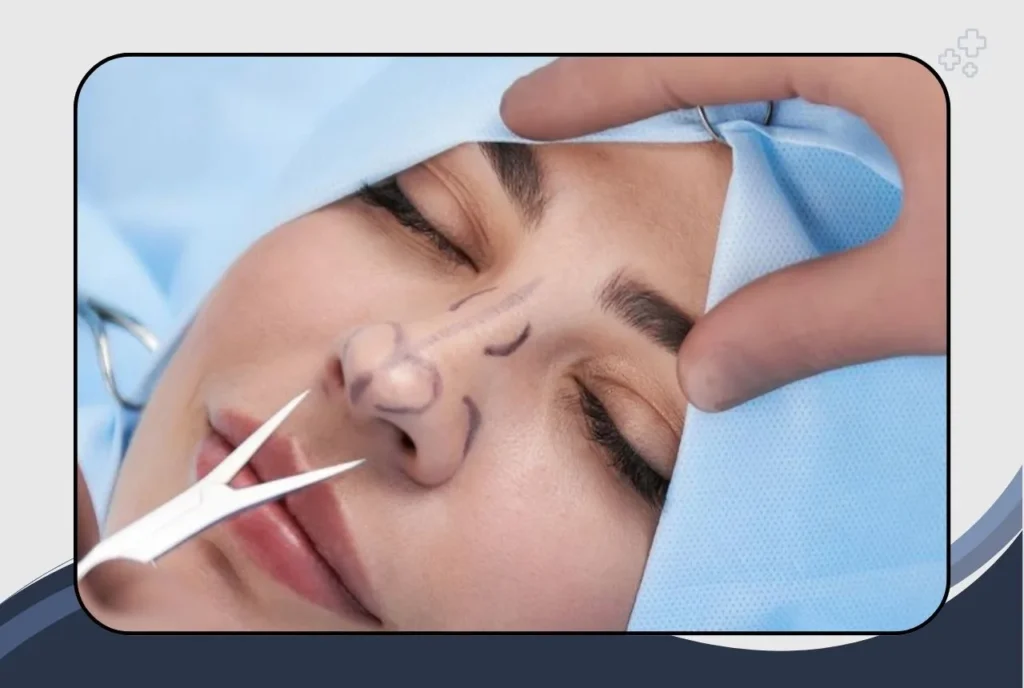Nose jobs types are among the most sought-after procedures in cosmetic and reconstructive surgery, commonly referred to by the general public as rhinoplasty. With multiple nose jobs types available today, patients have more choices than ever when it comes to reshaping, refining, or restoring the nose. Whether your goal is to enhance facial harmony, correct breathing difficulties, or undergo nose bone surgery to fix a deviated septum, understanding the different nose jobs types can help you make an informed decision.
This blog will walk you through the various types of surgery on nose, what to expect during the procedure, the recovery process, and the risks involved. It will also answer some of the most frequently asked questions about rhinoplasty to help you find the right nose job name for your specific needs.
Types of Rhinoplasty Surgeries
Choosing the best nose jobs types depends on your goals, nasal anatomy, and whether the procedure is cosmetic, functional, or corrective in nature. Below are the most common rhinoplasty types performed today.
Open Rhinoplasty
Open rhinoplasty involves a small incision on the columella, the tissue that separates the nostrils. This approach provides full visibility and access to the nasal structure, making it ideal for complex reshaping or secondary surgeries. It is a preferred option for those undergoing detailed nose bone surgery.
Closed Rhinoplasty
In closed rhinoplasty, all incisions are made inside the nostrils, leaving no visible scars. This method is suitable for patients who require mild to moderate reshaping. It offers quicker recovery and is a less invasive approach among all nose jobs types.
Revision Rhinoplasty
Revision or secondary rhinoplasty is performed when a previous surgery on nose did not deliver satisfactory results. It requires advanced skill as it involves working on altered or scarred tissue, and often includes further nose bone surgery or cartilage grafting.
Functional Rhinoplasty
Functional rhinoplasty is performed to improve breathing problems caused by structural issues like a deviated septum or collapsed nasal valve. Although functional in nature, this rhinoplasty type may also result in cosmetic improvements.
Ethnic Rhinoplasty
Ethnic rhinoplasty is designed to enhance the nose while preserving the unique ethnic characteristics of the patient. It requires a detailed understanding of various ethnic nasal structures and aims for natural-looking results without compromising identity.
Non-Surgical Rhinoplasty
Non-surgical rhinoplasty uses dermal fillers to improve the shape of the nose without actual surgery. It cannot address underlying bone issues, but is useful for minor refinements or balancing nasal proportions temporarily.
Why Rhinoplasty Consultation is Important
Before undergoing any type of surgery on nose, a professional consultation is essential. This initial meeting with a qualified surgeon helps evaluate the patient’s goals, examine their facial features, and choose the most suitable rhinoplasty type. Whether you are undergoing nose bone surgery or a non-surgical enhancement, the consultation ensures that your expectations are aligned with achievable results.
During the consultation, your surgeon will also explain the risks, benefits, and which nose job name applies to your situation, such as open rhinoplasty, closed rhinoplasty, or revision rhinoplasty.

What Happens During the Rhinoplasty Procedure
The rhinoplasty procedure typically lasts between one to three hours, depending on the complexity. Here’s a step-by-step overview of what to expect:
- Anesthesia is administered for comfort and safety.
- Incisions are made according to the selected approach (open or closed).
- The surgeon reshapes the nose by removing, adjusting, or adding bone or cartilage.
- In nose bone surgery, the nasal bones are carefully repositioned or refined.
- The skin is then redraped, and incisions are closed.
- A splint may be placed to support the new structure during initial healing.
This highly customized procedure ensures the nose complements your facial features while correcting structural issues if necessary.

Recovery After Rhinoplasty
Recovery varies depending on the type of rhinoplasty performed. Below is a general recovery timeline:
- First Week: Swelling, bruising, and mild discomfort are common. A splint or dressing is typically worn during this time.
- Weeks 2 to 4: Major swelling subsides, and normal activities can resume with caution.
- Months 2 to 6: The nose begins to settle into its new shape. Minor swelling may persist.
- After One Year: Final results are fully visible, and the internal healing process is complete.
Following your surgeon’s aftercare instructions is critical for achieving long-term results, especially after nose bone surgery or revision rhinoplasty.

Risks Associated with Rhinoplasty
All nose jobs types, like any surgical procedure, involve potential risks. These may include:
- Bleeding or infection
- Adverse reaction to anesthesia
- Breathing difficulties
- Nasal asymmetry
- Visible scars (especially in open rhinoplasty)
- Need for additional revision procedures
Selecting an experienced surgeon significantly reduces these risks. It also ensures that your chosen surgery on nose meets both cosmetic and functional expectations.

Frequently Asked Questions About Rhinoplasty Types
Which type of rhinoplasty is best?
The best rhinoplasty / nose jobs types depends on individual goals. Open rhinoplasty is preferred for extensive reshaping, while closed rhinoplasty is ideal for more subtle changes.
Is there different types of rhinoplasty?
Yes, there are several rhinoplasty types including open, closed, functional, ethnic, revision, and non-surgical options, each catering to specific needs.
What is the most popular rhinoplasty?
Open rhinoplasty is one of the most popular nose jobs types due to the precision it offers and its suitability for complex cases.
Can modern rhinoplasty techniques correct a crooked nose and improve the nasal airway even if I have had previous surgeries?
Yes, with advanced surgical techniques, even patients with prior surgeries can undergo successful nose bone surgery to correct deformities and improve nasal function.
How is a marginal incision typically performed in minimally invasive plastic surgery for the nasal bridge?
A marginal incision is made along the nostril’s rim, allowing access to nasal structures with minimal external scarring. It is often used in closed rhinoplasty procedures.
Can rhinoplasty improve nasal function and nasal congestion while enhancing nasal symmetry?
Yes, functional surgery on nose is designed to improve airflow and breathing while simultaneously enhancing nasal appearance and symmetry.
Conclusion: Why Choosing the Right Rhinoplasty Type Matters
Rhinoplasty is not just about changing how you look. It’s about restoring confidence, improving breathing, correcting past injuries, and enhancing natural facial balance. Each rhinoplasty type comes with its own benefits and considerations. Understanding the differences between open, closed, revision, and functional nose jobs types helps you make a better decision for long-term results.
Whether you are undergoing a first-time nose bone surgery or looking for a subtle cosmetic refinement, the success of your journey depends on choosing a skilled specialist and the right approach.
Book Your Consultation with Dr. Rahul Gogoi
If you are considering any type of rhinoplasty, whether for cosmetic enhancement or medical correction, now is the time to take the first step. An expert consultation will help you understand which nose job name and surgical method best suits your needs. From nose bone surgery to non-invasive enhancements, the right technique can significantly improve both appearance and quality of life.
Book your appointment today with Maxillofacial Surgeon Dr. Rahul Gogoi, a trusted expert in facial plastic surgery. Discover how the right rhinoplasty type can help you look and feel your best with results that are both natural and lasting.

Links:

